Affiliate links on Android Authority may earn us a commission. Learn more.
5 Android Phones That Won't Bite Your Budget in 2011
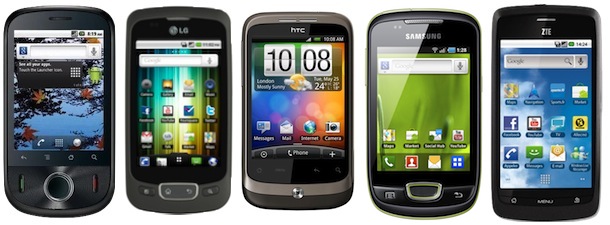
Everybody loves shiny new gadgets, especially shiny new Android phones, but the price tag often makes us (and our wallets) cringe. The good news is that nowadays, buying one doesn’t mean you have to scrimp and eat instant ramen for the rest of the year. There are a lot of phones out right now, running Android Froyo 2.2 no less, that are very affordable and right on the mark. If you’ve been looking for a capable Android phone that doesn’t bite your budget, here are five of the best ones you can choose from:
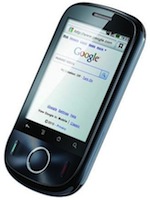
HUAWEI IDEOS U8150
- Display: 2.8-inch TFT, 240×320 pixels, 256K colors
- CPU: 528MHz ARM 11 with 200MB storage, 256 RAM and 512 ROM
- Weight: 102.1g
- Card Slot: up to 32GB microSD
- Connectivity: HSDPA, Wi-Fi b/g/n, Bluetooth 2.1 w/ A2DP
- Camera: 3.15MP, 2048×1536 pixels
- OS: Android 2.2 Froyo
- GPS: Yes, and includes A-GPS support
- Battery: 1200 mAh
- Standby Time: up to 300 hours
- Talk Time: up to 5 hours
The HUAWEI IDEOS U8150 (known as the Comet to T-Mobile subscribers) is one of the most wallet-friendly Android phones in the market right now. While the screen might appear tiny to some, it’s still a great option for first-time users who want to join the Android revolution.
One of the draws of this device is its Wi-Fi N support, giving it the ability to surf using faster N-based networks. If you want something a bit better, you can wait for the newer version of the IDEOS, the U8510. It will boast a faster 600MHz processor, a better 3.2-inch screen and an upgrade to Android 2.3 Gingerbread.
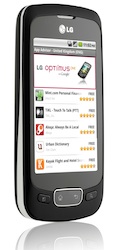
LG Optimus One P500
- Display: 3.2-inch TFT, 320×480 pixels, 256K colors
- CPU: 600MHz ARM 11 with 170MB storage and 512MB RAM
- Weight: 129g
- Card Slot: up to 32GB microSD (2gb included)
- Connectivity: HSDPA, Wi-Fi b/g, Bluetooth 2.1 with A2DP
- Camera: 3.15MP, 2048×1536 pixels with autofocus
- OS: Android 2.2 (upgradable to 2.3)
- GPS: Yes, and includes A-GPS support
- Battery: 1500mAh
- Standby Time: up to 550 hours
- Talk Time: up to 7 hours and 30 minutes
The Optimus One is one of the better Android phones of its class, running at a cool 600MHz. The battery is quite hefty at 1500mAh which gives you enough juice to last for two days of moderate usage. Another plus for the Optimus One is that it is upgradeable to Android 2.3, something you rarely see for handsets at this price point. All of these features make Optimus One a solid choice for an entry-level Android device.
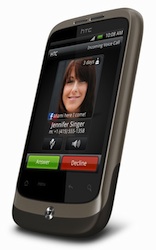
HTC Wildfire
- Display: 3.2-inch TFT, 240×320 pixels, 16M colors
- CPU: 528MHz ARM 11 with 384MB RAM and 512MB ROM
- Weight: 118g
- Card Slot: up to 32gb microSD
- Connectivity: HSDPA, Wi-Fi b/g, Bluetooth 2.1 with A2DP
- Camera: 5MP, 2594×1944 pixels with LED flash and autofocus
- OS: Android 2.2
- GPS: Yes, and includes A-GPS support
- Battery: 1300mAh
- Standby Time: up to 690 hours
- Talk Time: up to 8 hours and 10 minutes
HTC makes fantastic high-end phones so clearly the Wildfire is in good company. Dubbed as the Desire Mini, it certainly has inherited many of the features and stylings from its higher-end sibling. Like all HTCAndroid devices, it packs the Sense UI, which gives users a unique interface experience out of the box. It also boasts the best camera of the group at 5MP with LED flash and autofocus capabilities, and the best screen with support for 16 million colors.
If you can wait a bit longer, the Wildfire S is due for release in the next couple of months. The newer version features a higher-res screen, faster processor and Android 2.3 built-in. But if you feel the pull of the original, by all means get it. It’s a great device for anyone who needs Android right here and now.
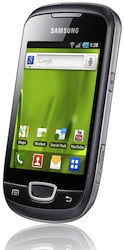
Samsung Galaxy Mini
- Display: 3.14-inch TFT, 240×320 pixel, 256K colors
- CPU: 600MHz 160MB Storage
- Weight: 105g
- Card Slot: up to 32GB microSD (2gb included_
- Connectivity: HSDPA, Wi-Fi b/g/n, Bluetooth 2.1 with A2DP
- Camera: 3.15MP, 2048×1536 pixels
- OS: Android 2.2
- GSP: Yes, and includes A-GPS support
- Battery: 1200mAh
- Standby Time: up to 570 hours
- Talk Time: up to 9 hours and 30 minutes
The Galaxy Mini is the newest entry to this budget class of Android phones. It has Wi-Fi N for faster connectivity and carries the same Samsung build quality we’ve come to expect. It doesn’t have any stellar features per se but you have to admit, the specs do match up quite well to the price it’s been given.
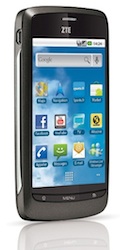
ZTE Blade
- Display: 3.5-inch AMOLED or LCD, 480×800 pixels, 256K colors
CPU: 600MHz ARM 11 with 150MB storage, 512MB RAM and 512MB ROM - Weight: 110g
- Card Slot: up to 32GB microSD (2gb incl)
- Connectivity: HSDPA, Wi-Fi b/g, Bluetooth 2.1 w/ A2DP and EDR
- Camera: 3.15MP, 2048×1536 pixels, autofocus
- OS: Android 2.1 Eclair, upgradable to 2.2 Froyo
- GPS: Yes, and includes A-GPS support
- Battery: 1250mAh
- Standby Time: up to 192 hours
- Talk Time: up to 4 hours
Also called the T-Mobile Blade, Dell XCD35 and the Orange San Francisco in the UK, the ZTE Blade is one of the most sought-after budget Android phones. The reason is that it packs quite a large screen for a lower-end phone, even boasting AMOLED for some versions of the handset.
To top this off, it also has a capable 600MHz processor which really shines once you upgrade the device to Froyo. One thing to note though: The Orange version has a custom skin on it so if you want the stock Android experience, switch it out with the Homescreen Selector option. By far, this is the best choice among the phones we’ve selected.
Conclusion
Any of these would be an excellent choice for a first Android phone for soon-to-be fans but if a gun were to be pointed at my head, I’d pick the ZTE Blade, especially if the AMOLED version is available. Don’t take my word for it though; go ahead and check out the other phones for yourself first-hand to see which fits you best. I think there is one thing we’d agree on though: you don’t need to spend much to get a good Android phone.